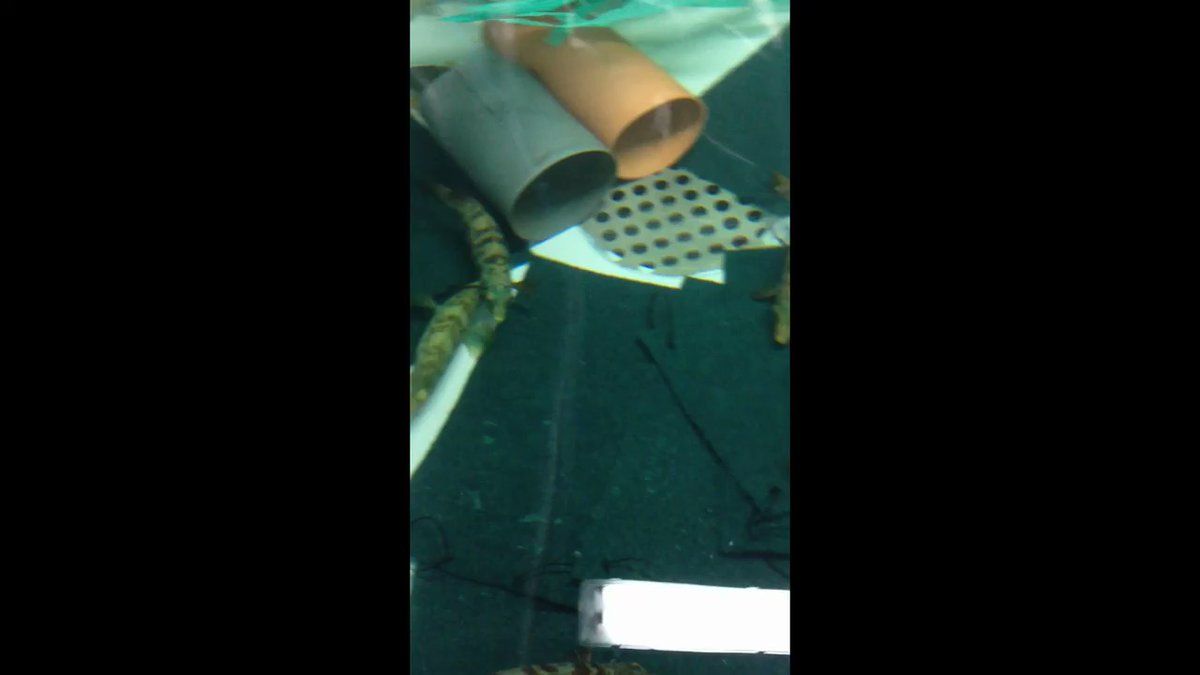Machrihanish milestone as farmed wrasse spawn

A MAJOR milestone in wrasse culture has been reached at the Marine Harvest hatchery in Machrihanish, with the first spawning of farmed fish.
Andrew Davie, of the Institute of Aquaculture, who has spearheaded wrasse research in collaboration with the Marine Harvest site, along with the company’s Paul Featherstone and Lindsay Sherriff, said on Twitter yesterday: ‘It has taken eight years of collaborative research and development and six years waiting and watching these fish to get to this point.’
Scottish salmon farmers have invested millions of pounds in the farming of cleaner fish, including wrasse and lumpfish, to help control sea lice levels on farms.
Marine Harvest said, on its Facebook page, that the latest achievement had been a huge success by everyone involved, developing the knowledge of the behaviour and ecology of ballan wrasse necessary for them to spawn naturally in tanks.
‘This knowledge has been used to set up systems where we now get significant amounts of eggs reliably throughout the year. The broodstock numbers are continually being developed so that we now have enough brood fish to scale up production of juvenile fish.
‘As a coastal species that inhabits a reef environment, the behavioural requirements of ballan wrasse are quite significant. As in the sea cages, where kelps are required to provide refuge, similar hides and refuges are required in tank sites where if they are absent, the fish don’t thrive and suffer chronic stress.
‘The spawning behaviour requires the tank to be set up with a ‘reef’ of kelps and hides, and a spawning ‘sea bed’ area of matts. A harem of a number females, with fewer males in attendance (similar to red deer), are established.
‘However, in wrasse there is a possible female dominance hierarchy, as even though they are all capable, not all females spawn. Also, if there are not enough males, a female in time can change into a male.
‘Wrasse have a rhythmic spawning pattern where they can spawn for four days and not spawn for 10 days, and it is attractive to think that this might be associated with tidal cycles. The very fragile larvae hatch in seven days.
This spring, we now have the first farmed wrasse spawning at Machrihannish, which is a major milestone in the development of farmed wrasse. In the future, we would like to think that it will be possible to recruit proven cleaner fish wrasse from production sites.’
Earlier this year, Marine Harvest won planning consent to build a new wrasse hatchery at Machrihanish, to help meet the growing demand for farmed cleaner fish.
Once completed, the 20,000 sq ft plant is expected to produce around 800,000 wrasse a year. It will be located adjacent to the existing Machrihanish wrasse hatchery, which produces around 200,000 farmed wrasse annually, in a joint farming programme with Scottish Sea Farms.
Marine Harvest is also developing Anglesey Aquaculture in north Wales, as another hatchery for rearing wrasse.
Picture: Marine Harvest

